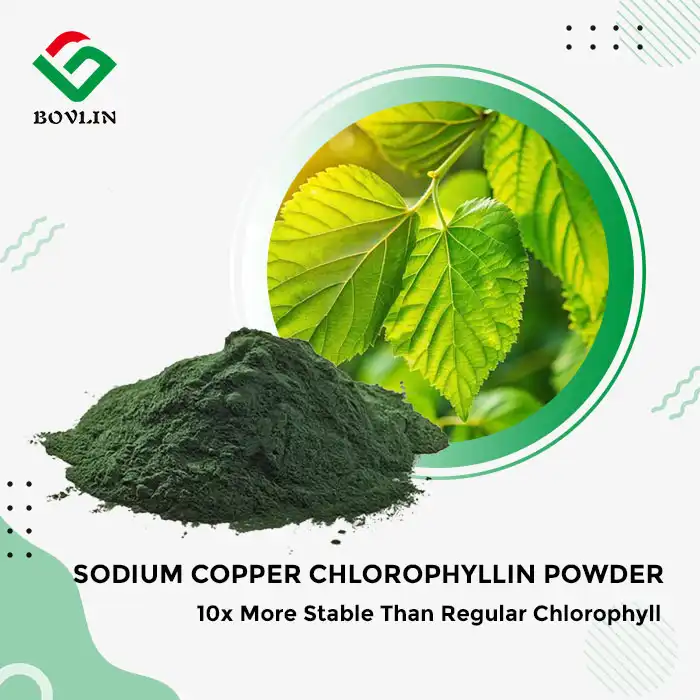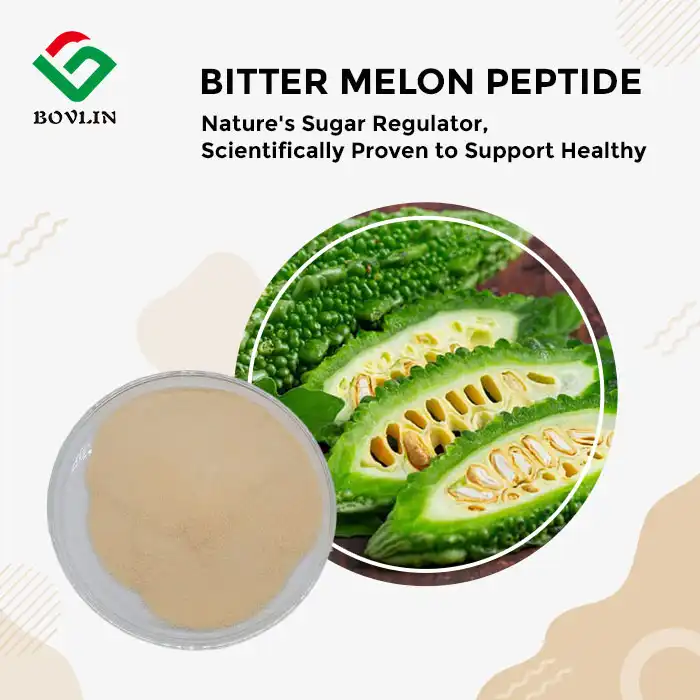What Makes Sea Buckthorn Fruit Powder a Powerful Antioxidant for Daily Wellness?
In the nutraceutical and functional food industries, sourcing ingredients with proven antioxidant capacity is essential for product differentiation and efficacy. Sea buckthorn fruit powder stands out as a powerful antioxidant ingredient due to its extraordinary concentration of bioactive compounds. What makes this powder exceptional is its unique phytochemical matrix. It contains over 190 bioactive nutrients working synergistically to combat oxidative stress. The powder delivers exceptionally high levels of Vitamin C, Vitamin E, carotenoids, flavonoids, and polyphenols. This comprehensive antioxidant profile enables manufacturers to create wellness products that address cellular protection, immune support, and chronic inflammation reduction. For formulators developing dietary supplements, functional beverages, or health food products, this ingredient offers a science-backed solution to meet growing consumer demand for natural, effective antioxidant support.

How Natural Polyphenols and Flavonoids in Sea Buckthorn Work?
Understanding the fundamental mechanisms behind an ingredient's efficacy is critical for product development and marketing claims. The antioxidant power of sea buckthorn fruit powder is rooted in its rich phytochemical composition. These plant-derived compounds have been extensively studied for their ability to neutralize harmful free radicals and protect cellular structures. This section examines the specific polyphenolic and flavonoid compounds that make this powder an exceptional choice for antioxidant-focused formulations.
Understanding the Polyphenolic Profile of Sea Buckthorn
Polyphenols are a diverse class of plant compounds recognized for their potent antioxidant activity. Sea buckthorn berry powder contains an impressive array of these bioactive molecules. Research has identified numerous phenolic acids and compounds in sea buckthorn, including:
- Gallic acid
- Protocatechuic acid
- Caffeic acid
- Ferulic acid
- p-Coumaric acid
These polyphenols function as electron donors, neutralizing reactive oxygen species (ROS) before they can cause cellular damage. The concentration of total polyphenols in sea buckthorn berries can reach up to 15-20 mg/g of dry weight. This high density makes the powder an efficient delivery system for these protective compounds. For manufacturers formulating antioxidant supplements or functional foods, this translates to a smaller required dosage while maintaining high efficacy.
Flavonoid Compounds and Their Free Radical Scavenging Capacity
Flavonoids represent a particularly important subclass of polyphenols found abundantly in sea buckthorn powder. These compounds are responsible for many of the powder's protective benefits. The major flavonoid families present include:
- Quercetin: One of the most potent antioxidant flavonoids, known for stabilizing cell membranes.
- Kaempferol: Provides robust protection against oxidative damage in biological systems.
- Isorhamnetin: A methylated flavonol with enhanced bioavailability and antioxidant capacity.
- Rutin: A glycoside that supports vascular health and reduces oxidative stress.
Studies demonstrate that these flavonoids work through multiple mechanisms. They directly scavenge free radicals, chelate pro-oxidant metal ions, and up-regulate endogenous antioxidant enzymes. The flavonoid content in sea buckthorn varies by subspecies and growing conditions. However, quality sources consistently deliver significant concentrations, making them reliable for standardized product formulations.
Synergistic Effects of Combined Plant Compounds
What truly distinguishes organic sea buckthorn powder is not just the presence of individual compounds but their synergistic interaction. Scientific research indicates that whole-food matrices often demonstrate greater biological activity than isolated compounds. The diverse phytochemicals in sea buckthorn work in concert:
- Polyphenols and flavonoids enhance each other's stability and bioavailability.
- Lipophilic and hydrophilic antioxidants protect different cellular compartments simultaneously.
- Some compounds regenerate others, creating a self-sustaining antioxidant network.
This synergy means that products formulated with whole sea buckthorn powder may offer superior protection compared to single-compound antioxidant ingredients. For manufacturers, this provides a compelling story of comprehensive, nature-derived wellness support backed by the principle of food synergy.
The Role of Vitamin C and Vitamin E in Combating Oxidative Stress
Vitamins C and E are among the most well-documented antioxidants in nutritional science. They serve as foundational elements in the body's defense against oxidative damage. Sea buckthorn fruit powder is exceptionally rich in both of these critical vitamins, making it a premier ingredient for antioxidant-focused wellness products. This section explores how these vitamins function and why their naturally occurring forms in sea buckthorn offer distinct advantages for product formulation.
Vitamin C as a Primary Antioxidant Defense System
The Vitamin C content in sea buckthorn powder is truly remarkable. Depending on the variety and processing method, it can contain 200-1,500 mg of Vitamin C per 100g of dry weight. This concentration is 4-15 times higher than that found in oranges. Vitamin C (ascorbic acid) functions as a primary water-soluble antioxidant through several mechanisms:
- Direct Free Radical Neutralization: Ascorbic acid donates electrons to neutralize superoxide, hydroxyl radicals, and other ROS.
- Regeneration of Other Antioxidants: It recycles oxidized Vitamin E, extending its protective capacity.
- Metal Ion Chelation: It binds transition metals that can catalyze harmful oxidative reactions.
For manufacturers developing immune support, skin health, or general wellness products, this high natural Vitamin C content provides significant formulation value. It allows for clean label declarations and supports multiple health claims backed by extensive EFSA and FDA-recognized science.
Vitamin E and Protection of Lipid Structures
While Vitamin C protects aqueous environments, Vitamin E (tocopherols and tocotrienols) serves as the primary defense for lipid-rich areas. Sea buckthorn berry powder contains a full spectrum of Vitamin E compounds, including:
- α-Tocopherol (the most biologically active form)
- β-Tocopherol
- γ-Tocopherol
- δ-Tocopherol
These compounds are lipophilic antioxidants that integrate into cell membranes and lipoproteins. They prevent lipid peroxidation, a chain reaction that damages cellular membranes and contributes to chronic disease. The Vitamin E content in sea buckthorn can range from 10-30 mg per 100g. This concentration ensures that formulations support comprehensive cellular protection. Products targeting cardiovascular wellness, cognitive health, or metabolic support benefit significantly from this naturally occurring Vitamin E complex.
The Synergistic Partnership of Vitamins C and E
The true power of sea buckthorn fruit powder lies in the natural co-occurrence of Vitamins C and E. These two vitamins work in a cyclical, regenerative partnership:
- Vitamin E neutralizes lipid peroxyl radicals in cell membranes, becoming oxidized in the process.
- Vitamin C then reduces the oxidized Vitamin E back to its active form.
- This cycle extends the protective lifespan of both vitamins significantly.
This biological synergy is difficult to replicate with isolated, synthetic vitamins. The whole-food matrix of sea buckthorn delivers both vitamins in their natural forms, along with supporting cofactors. For formulators, this means enhanced stability, bioavailability, and efficacy. Products can be positioned as providing "complete antioxidant protection" with a simple, natural ingredient list.
Enhancing Cellular Defense and Reducing Inflammation Naturally
Beyond direct antioxidant activity, the bioactive compounds in sea buckthorn powder influence broader cellular health mechanisms. They modulate gene expression, support endogenous defense systems, and regulate inflammatory pathways. This multi-level action makes the powder valuable for manufacturers developing products targeting long-term wellness and chronic health challenges. Understanding these deeper mechanisms allows for more sophisticated product positioning and targeted health claims.
Activating Endogenous Cellular Protection Mechanisms
The body possesses its own sophisticated antioxidant defense systems, including enzymes like superoxide dismutase (SOD), catalase, and glutathione peroxidase. Organic sea buckthorn powder has been shown to up-regulate the expression and activity of these endogenous enzymes. This occurs through several pathways:
- Nrf2 Pathway Activation: Polyphenols in sea buckthorn activate the Nuclear factor erythroid 2-related factor 2 (Nrf2). This transcription factor controls the expression of antioxidant response genes.
- Enhanced Glutathione Production: Certain compounds support the synthesis of glutathione, often called the "master antioxidant."
- Mitochondrial Protection: Bioactive components protect mitochondrial membranes and function, reducing cellular ROS production at the source.
Research demonstrates that regular intake of sea buckthorn bioactives can significantly increase cellular antioxidant capacity beyond what is achieved by the ingredient's direct radical-scavenging activity alone. For manufacturers, this means products can offer sustained, adaptive protection rather than just acute antioxidant effects.
Modulating Inflammatory Pathways for Health Maintenance
Chronic low-grade inflammation is now recognized as an underlying factor in numerous health conditions. Oxidative stress and inflammation are closely interconnected in a self-perpetuating cycle. Sea buckthorn fruit powder addresses both simultaneously. Its anti-inflammatory properties operate through multiple mechanisms:
- NF-κB Inhibition: Key polyphenols and flavonoids inhibit Nuclear Factor kappa B, a primary regulator of inflammatory gene expression.
- Cytokine Modulation: Studies show reductions in pro-inflammatory cytokines such as TNF-α, IL-6, and IL-1β.
- Prostaglandin Regulation: Certain compounds influence cyclooxygenase (COX) and lipoxygenase (LOX) pathways, reducing inflammatory mediator production.
Clinical and preclinical studies have documented significant anti-inflammatory effects of sea buckthorn extracts. These findings support the development of products targeting inflammatory conditions, metabolic health, cardiovascular support, and healthy aging. The combination of antioxidant and anti-inflammatory action creates a comprehensive wellness proposition.
Long-Term Wellness Applications Across Product Categories
The multi-faceted benefits of sea buckthorn berry powder enable its use across a wide spectrum of product applications. Manufacturers can leverage this ingredient in:
- Dietary Supplements: Capsules, tablets, and softgels for daily antioxidant and immune support.
- Functional Beverages: Powdered drink mixes, ready-to-drink wellness shots, and enhanced waters.
- Nutritional Bars and Snacks: Incorporation into formulations for added nutritional density and antioxidant claims.
- Sports Nutrition: Products targeting exercise-induced oxidative stress and recovery support.
- Age-Wellness Products: Formulations specifically designed for healthy aging and longevity markets.
The versatility of the powder form allows for easy incorporation into diverse matrices. Its natural, plant-based origin aligns with clean label trends. The robust scientific backing enables credible health claims that resonate with informed consumers and healthcare practitioners.
Conclusion
Sea buckthorn fruit powder represents a scientifically validated, multi-dimensional antioxidant ingredient for the nutraceutical and functional food industries. Its power derives from an exceptional concentration of polyphenols, flavonoids, Vitamins C and E, and carotenoids working in synergy. These compounds provide comprehensive protection against oxidative stress through direct free radical scavenging, endogenous enzyme activation, and anti-inflammatory modulation. For manufacturers seeking to develop high-efficacy wellness products, this ingredient offers a natural, clean-label solution backed by extensive research. Its versatility across product formats and alignment with consumer wellness trends make it an invaluable asset for innovation and market differentiation.
FAQs
What standardization parameters should manufacturers request for sea buckthorn fruit powder?
Manufacturers should request specifications for total polyphenol content, Vitamin C concentration, and moisture levels as minimum quality markers. Advanced specifications may include flavonoid profiles and antioxidant capacity measured by ORAC or DPPH assays. Ensuring organic certification and testing for heavy metals, pesticides, and microbial contamination is essential. Requesting batch-to-batch COA (Certificate of Analysis) ensures consistency for standardized formulations.
How does sea buckthorn powder compare to synthetic antioxidant ingredients?
Sea buckthorn powder offers a broad spectrum of synergistic compounds rather than a single isolated molecule. This whole-food matrix typically demonstrates enhanced bioavailability and multi-pathway activity. Unlike synthetic antioxidants, it provides additional nutrients like essential fatty acids and amino acids. The natural origin supports clean label positioning and aligns with consumer preferences for plant-based ingredients, offering significant marketing advantages.
What is the recommended inclusion rate in nutraceutical formulations?
Typical inclusion rates range from 500 mg to 2,000 mg per serving for dietary supplements, depending on the target health claim and product positioning. For functional foods and beverages, rates of 1-3% by weight are common. Manufacturers should conduct stability testing and sensory evaluation to optimize dosage while maintaining product quality and palatability.
Your Trusted Manufacturer and Supplier - Bolin Biotechnology
As a specialized manufacturer and leading supplier of premium botanical extracts, Bolin Biotechnology delivers pharmaceutical-grade sea buckthorn fruit powder to nutraceutical and functional food companies worldwide. Our advanced factory utilizes cutting-edge extraction and processing technology to preserve the full spectrum of bioactive compounds. We provide comprehensive technical support, customized specifications, and consistent quality that meets international standards. Partner with us to access reliable, traceable, and scientifically validated ingredients for your wellness product lines. Contact our team today at sales1@bovlin.com for detailed specifications and samples.
References
Zeb, A. (2004). Important therapeutic uses of sea buckthorn (Hippophae): A review. Journal of Biological Sciences.
Bal, L. M., Meda, V., Naik, S. N., & Satya, S. (2011). Sea buckthorn berries: A potential source of valuable nutrients for nutraceuticals and cosmoceuticals. Food Research International.
Rösch, D., Bergmann, M., Knorr, D., & Kroh, L. W. (2003). Structure−antioxidant efficiency relationships of phenolic compounds and their contribution to the antioxidant activity of sea buckthorn juice. Journal of Agricultural and Food Chemistry.
Eccleston, C., Baoru, Y., Tahvonen, R., Kallio, H., Rimbach, G. H., & Minihane, A. M. (2002). Effects of an antioxidant-rich juice (sea buckthorn) on risk factors for coronary heart disease in humans. The Journal of Nutritional Biochemistry.
5. Larmo, P., Alin, J., Salminen, E., Kallio, H., & Tahvonen, R. (2008). Effects of sea buckthorn berries on infections and inflammation: a double-blind, randomized, placebo-controlled trial. European Journal of Clinical Nutrition.
Suryakumar, G., & Gupta, A. (2011). Medicinal and therapeutic potential of sea buckthorn (Hippophae rhamnoides L.). Journal of Ethnopharmacology.











